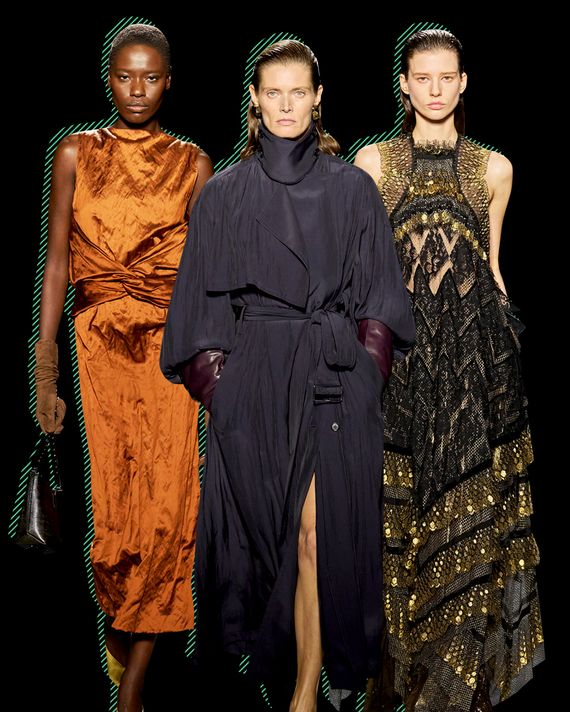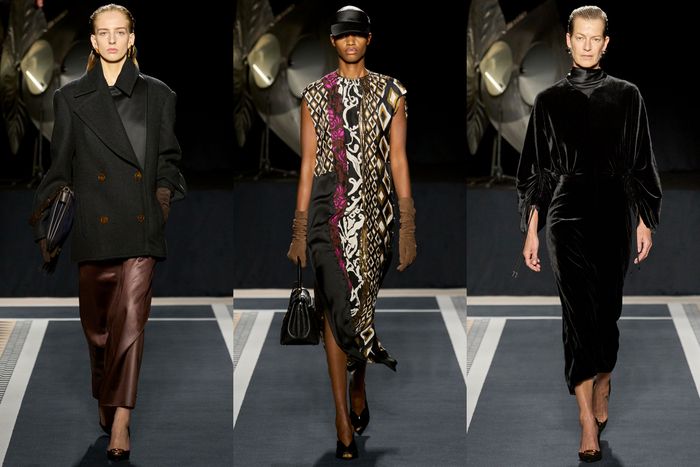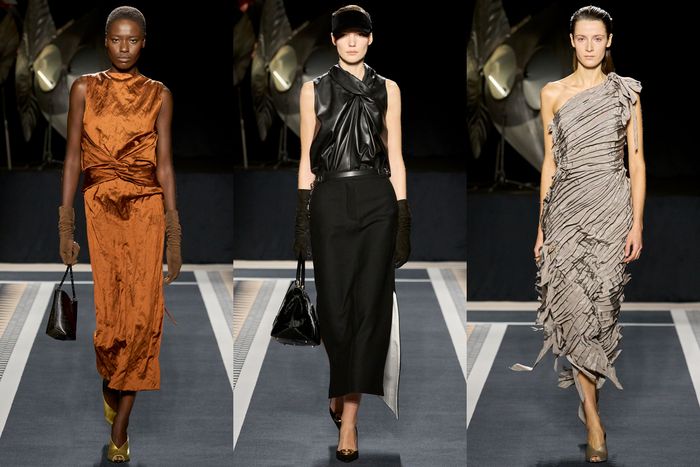
Peter Copping has had either a very strange career or a very enviable one. Born in England in 1967, he was an intern for Christian Lacroix in Paris while still in design school. He then worked as an assistant under Marc Jacobs at Louis Vuitton; became creative director at Nina Ricci; spent two years in New York as design director at Oscar de la Renta, from 2014; and then had a break of about five years, spent mostly at his home in Normandy, in northern France, where he designed things for private clients and a line of home goods. Before Demna restarted Balenciaga couture, in July 2021, he got in touch with the British designer. He invited him to work on the annual collection, which he did until this summer, when Lanvin called. At a time when many are talking about the industry’s “musical chairs,” Copping knows something about being on the move.
He has landed well, or, rather, Lanvin has finally found an artistic director who makes sense. His first collection, shown last night to a relatively small audience on a modernist carpet inspired by a floor in Jeanne Lanvin’s house — the lady’s bath, to be precise — was a class act of comfort and chic. Nothing was uptight, phony, or sentimental — and you can get a lot of that on a debut night in Paris. But Copping spared us. The opening look set the pace: a roomy black wool peacoat with a leather panel, tortoiseshell buttons (a nice detail), and a long, slim skirt in dark-brown leather (with snaps going up the back vent).
There were also slim skirts with matching turtlenecks or a navy Breton sweater with gold buttons on one shoulder or a sleeveless leather top with a twist of leather at the neckline; easy print dresses in parachute silk; good-looking plain overcoats; and a fantastic trench coatdress, also in parachute silk, based on a Lanvin cut from the 1930s. Copping was selective about what he put out last night, since he had to cover several bases, including menswear. The collection is in fact huge. But, on the runway, the edited daytime looks just left you hungry to see more, especially in the way of wardrobe separates.
Beforehand, Copping said he had a good look at the Lanvin archive and at files of drawings and embroidery samples. “I really didn’t want to get too academic about it,” he said. “I thought, I’m just going to cherry-pick whatever jumps out at me and resonates.” He was most fascinated by Jeanne Lanvin and her personal style. Like Coco Chanel, she began as a milliner and then became a couturiere sometime before World WarI. “She was really someone with a social conscience,” Copping remarked. She opened an in-house nursery and, with Hermès, started a holiday camp for employees. A painting of Jeanne in a green jacket or cardigan inspired a soft-shoulder jacket for men in faded grass-green velvet. And Copping translated her languid lines for evening clothes, which included an open-back black knit dress embellished with black sequins and a wonderful bronze tulle apron dress worn loosely over gold lamé pants. “I think that’s something we’ll take forward for summer, perhaps in poplin,” he said of the apron.
The collection had other novel items with an everyday sense of function, like shimmery, loose-fitting turtleneck tops on the men’s side that could also work for women; slightly baggy wool trousers; and a variety of blouses, including one in black chiffon with black velvet flocking that could perk up a suit. I just wanted to see more — and more proposals for how to individually wear the clothes. Because Copping has the breadth of experience, and the design depth at Lanvin, to do that.
He essentially has the evening clothes down, with dresses made of spiraling lengths of ribbon (some infused with metal for texture), velvet columns, and variations on embellished but relatively simple tunics and tents.
Copping is the third designer — or have I lost count? — to succeed Alber Elbaz, whose remake of Lanvin in the early 2000s was one of the most successful in recent fashion history. His Lanvin was often unstructured, unlined, and frayed at the edges. The boutique was stuffed with editors during the shows trying to get a piece. Copping skipped that era, and the designs of his immediate predecessors, Bruno Sialelli and Bouchra Jarrar, and went straight to the source, Jeanne Lanvin. The company’s deputy chief executive, Siddhartha Shukla, says he expects to double wholesale volume this year, based on early reaction.
In my view, the best thing about the show is that Copping didn’t get elitist or too “couture” with his style. People have remarked at clothes with a couture look, notably Simon Porte Jacquemus’s new collection, with its classic shapes and big volumes. But is that a good thing? Does it really mean anything or is it an empty gesture? Most of these kinds of efforts we’ve seen before in fashion, and sometimes done in a way that makes sense with the history of a house (Demna’s first couture show for Balenciaga that connected his style with that of Cristóbal Balenciaga’s; Kim Jones’s fall 2025 men’s collection with its streamlined fit and believable use of pale-pink silk for tailored jackets and coats).
Posh can seem like such a downer today, part of the overpackaged look you get from a lot of big luxury labels. With luxury sales flat in many parts of the world, brands are wondering how to attract consumers. Maybe they should try offering something that feels human, direct, and smart.




